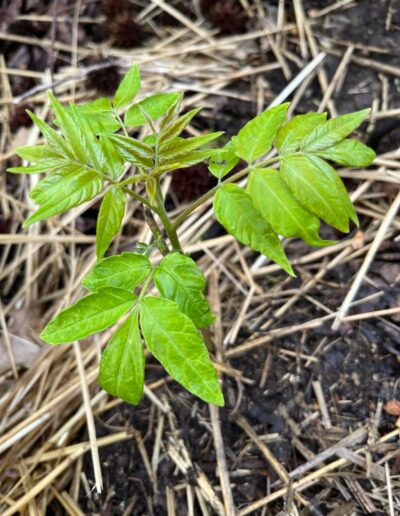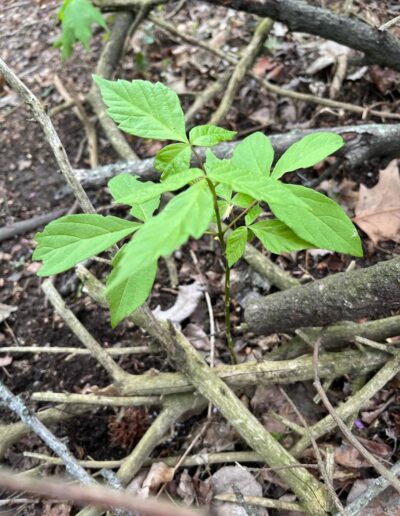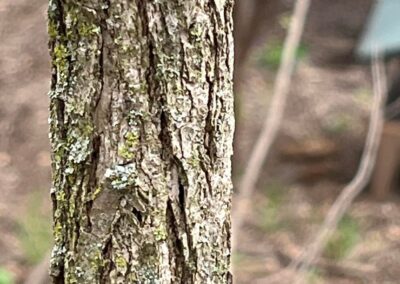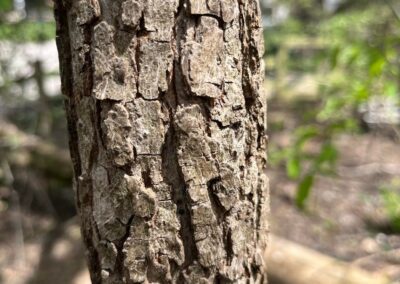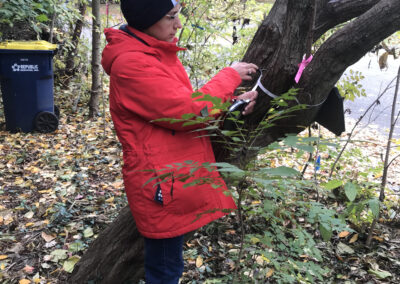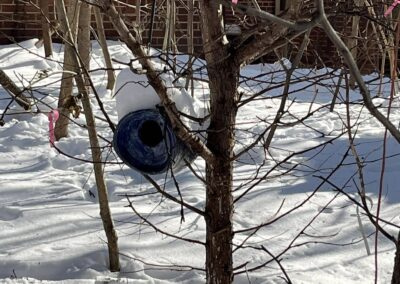TREE INVENTORY
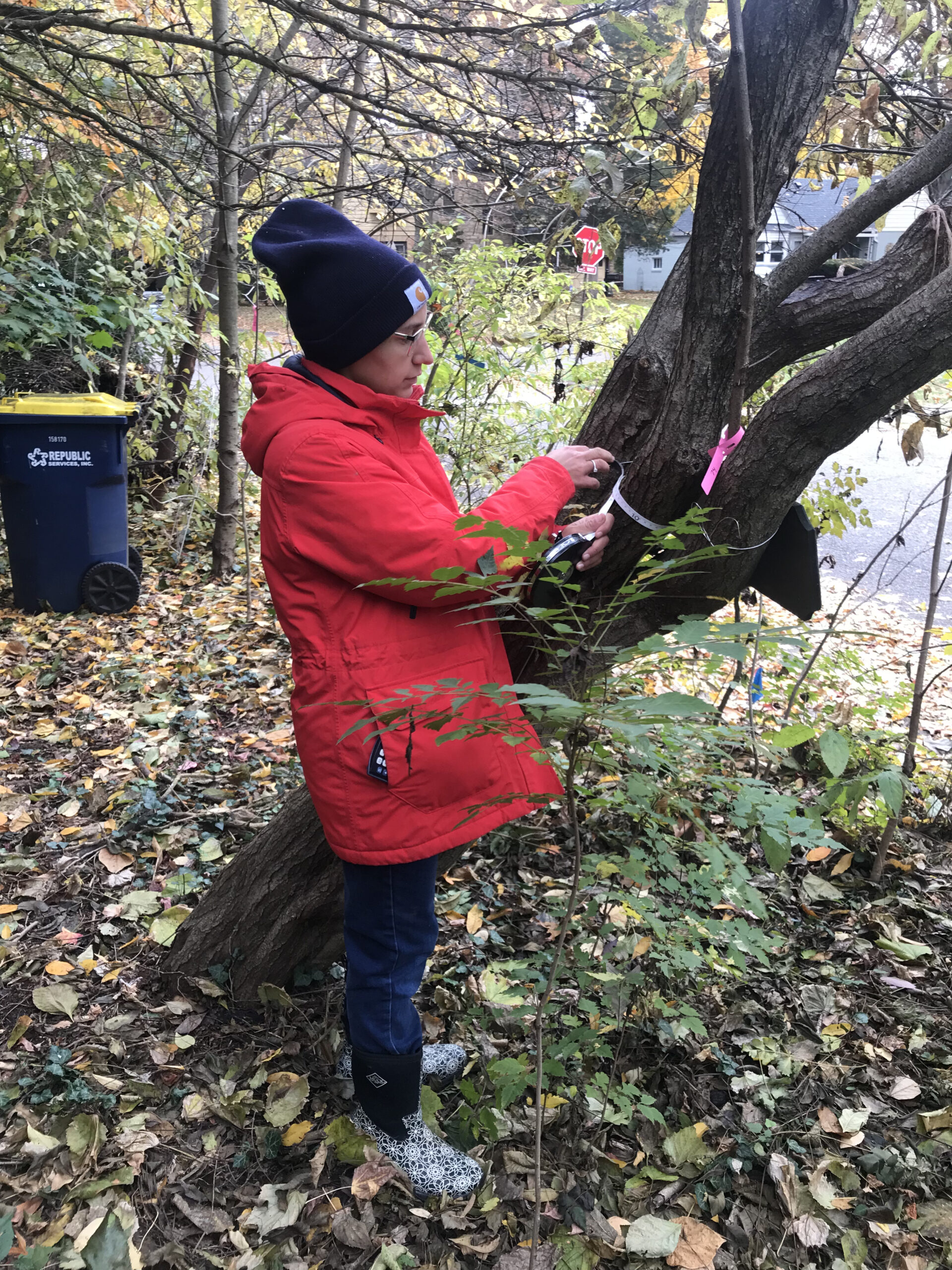
On Documenting Nature:
“I write as the birds sing, because I must, and usually from the same source of inspiration.”
Conducting the Tree Inventory
We chose to do a tree inventory to document the trees at the time of the inventory (done in the summer of 2021). Over the years, the tree population has visibly changed, but we had never formally recorded what was there. This inventory gives us lots of information about Wildergarden’s current forest, such as how many trees there are and of what species. It also gives us information on the ages and sizes of the trees, as well as enables us to calculate a carbon storage estimate. If and when another tree inventory is done, the 2021 data can be used as a baseline for comparison. Check out the results below! We were especially surprised to see that the Wildergarden currently stores about 94 tons of carbon in the trees alone, not including other herbaceous plants or plant matter.
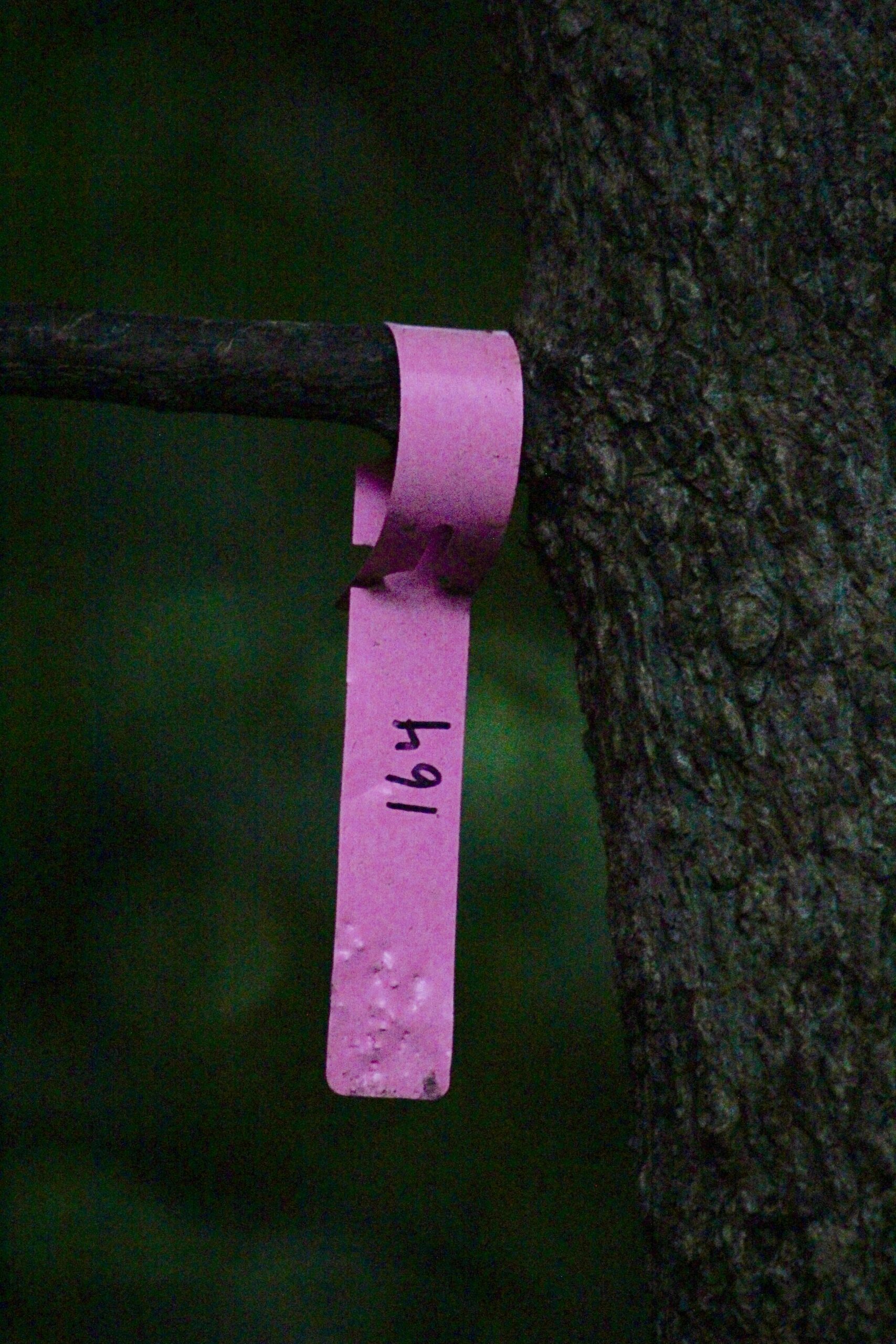
Inventory Method
We started the inventory by tagging each tree in the Wildergarden and labeling it with a unique number. We labeled every tree that was larger than 10 cm tall. Trees smaller than that were inventoried if they had been intentionally planted. We created a basic inventory sheet to fill out for each specimen. The sheet included: Common name, scientific name, diameter at breast height (DBH), height, condition, origin (volunteer or planted), shape (single or multi-stemmed), carbon storage estimate, potential challenges to the tree’s success, and unique benefits. Height and unique benefits were not recorded for most trees.
Analysis Process
After tagging and inventorying all the trees, we entered the data into an excel spreadsheet. We used the tree DBH in Chojnacky et al.’s (2013) equation to calculate the biomass for each specimen. Then, assuming 50% of biomass is carbon mass, we were able to estimate the total carbon stored in trees in the Wildergarden. Click HERE for a template you can use when conducting your own Tree Inventory!
Changing Climate Patterns
In our tree and plant inventories, we intend to track which ones are most likely to be resilient and sustainable in the face of changing climate patterns.
Future Use
The current tree inventory data is useful to use as a baseline measurement. In order to track change, multiple tree inventories should be conducted over time, for example every 5-10 years. This will give us a more concrete comparison to see how the Wildergarden changes over time.
Results
Summary Calculations
Counts
Number of specimens: 271
Number of species: 38
Calculations
Average DBH: 5.8 cm
Median DBH: 2.3 cm
Range: 0.4-256 cm
73 individuals 4 cm
Estimates
Biomass estimate: 377,118 lbs (188.5 tons)
Carbon Storage estimate: 188,559 lbs (94 tons)
Tree Species Counts
Hackberry (43)
Green Ash (32)
Norway Maple (23)
Eastern Redcedar (16)
Sweet Gum (16)
Goldenrain Tree (15)
Wild Black Cherry (14)
Dogwood sp. (13)
Eastern Redbud (11)
Bottlebrush Buckeye (9)
Persimmon (9)
Black Walnut (7)
White Mulberry (6)
American Cranberry (5)
Red Oak (5)
Silver Maple (5)
Boxelder (3)
Eastern Hemlock (3)
Viburnum sp. (3)
Apple (2)
Basswood (2)
Bur Oak (2)
Hickory sp. (2)
Northern Pecan (2)
Paw Paw (2)
Purple Sand Cherry (2)
River Birch (2)
Serviceberry (2)
Tulip Poplar (2)
White Oak (2)
White Pine (2)
Yellowwood (2)
Bitternut (1)
Blue Beech/
American Hornbeam (1)
Blue Spruce (1)
Magnolia (1)
Northern Catalpa (1)
Ohio Buckeye (1)
Pignut Hickory (1)
Shellbark Hickory (1)
Scouting for Seedlings
New volunteer native trees emerging in Spring 2023: Black Walnut and Box Elder. Scouting in the spring for new seedlings is fun. Both of these trees were significant in our natural history, so it’s not surprising that they grow here without us planting them.

